from 2 reviews
08 Nights / 09 Days
Specific Tour
12 people
___
India has diverse and vast charms and for a brief introduction, the Golden Triangle Circuit along with Varanasi is a perfect tour. Encompassing the best destinations of North India, the tour combines the famous tourist circuit, called India’s Golden Triangle, which includes the bustling capital New Delhi, the dwelling of the world’s famous tribute of love Taj Mahal, Agra and the pink city of Rajasthan, Jaipur with the beautiful holy city by the River Ganges, Varanasi, also called Benares.
Places Covered: Delhi / Varanasi / Agra / Jaipur
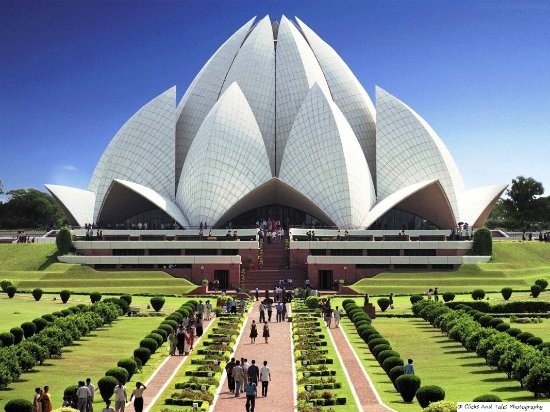
You are meet & greet with our company representative and he will escort you to the hotel and will help you with the check -In formalities. Day at your own leisure.
Over Night stay at hotel.
Lotus Temple
Delhi - Delhi, an energetic city, with a unique blend of the ancient and the modern era. Delhi has divided into two parts New Delhi, the city created by the British in 1911 as the Imperial capital of India and Old Delhi considered as the Muslim capital of India between the 17th and the 19th century. Delhi is the unique blend of tradition & modernity. It is an architectural college of parks & flyovers, historical buildings and skyscrapers. People live here in different cultures, languages, states, traditions and countries in complete harmony.
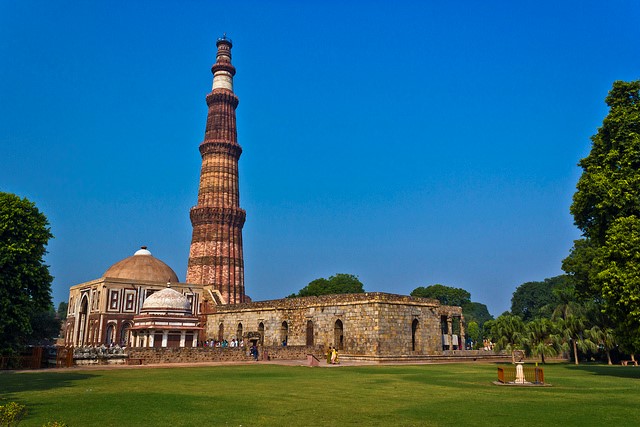
After a relaxing breakfast, the tour guide will pick you up from the hotel and take you for a guided sightseeing of Old and New Delhi.
Full day a guided tour of Old Delhi, the 17th century walled city of Shah Jahanabad, visiting the great Jama Masjid, the principal mosque of Old Delhi. Built in the year 1656 AD by the Mughal Emperor Shah Jahan, it is the largest & best known mosque in India. Later take a rickshaw ride through Chandni Chowk, the old marketplace of Shah Jahanabad now a picturesque bazaar.
Jama Masjid Qutub Minar
In New Delhi, visit Raj Ghat, memorial to the Father of the Nation, Mahatma Gandhi. It is a simple black marble platform that marks the spot of his cremation on 31 January 1948.
We will stop for lunch at Good local Restaurant.
Further we drive past India Gate, memorial built in the year 1931 to commemorate the Indian soldiers who died in the World War I & the Afghan Wars. The names of the soldiers who died in these wars are inscribed on the walls. President's House, the official residence of the President of India, built in the year 1931. Until 1950 it was known as Viceroy's House & served as the residence of the Governor-General of British India.
Culminate the day at Qutub Minar, built in the year 1206 by Qutub-ud-din Aibek. It is the tallest (72m) brick minaret in the world, an important example of Indo-Islamic Architecture.
Overnight stay at hotel.
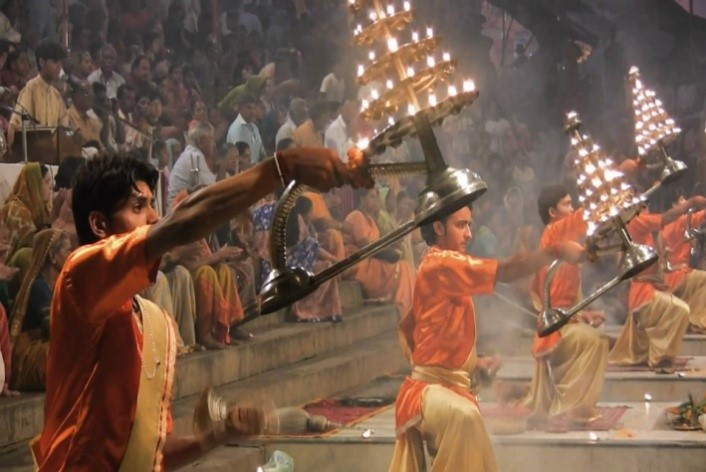
Upon arrival you are meet & greet by our company representative later you are transferred to your pre-booked hotel.
Fire Ceremony
Varanasi or Banaras, mentioned in the scriptures as Kashi, is less of a city and more of a dreamy experience. It is a paragon of Indian culture, philosophy, traditions and spiritual ethos since times immemorial. It is among the Sapta Puries, meaning seven sacred cities of Ancient India. The city is located on the bank of River Ganga which has two tributaries in the city: Varuna and Assi; hence the name Varanasi. The combination of Kashi – the holy city, Ganga- the sacred river and Shiva- the supreme God, makes Varanasi an immortal destination. Today, Varanasi remains the hub of cultural and holy activities. In the field of learning, especially of Religion, Philosophy, Yoga, Ayurveda, Astrology, Dance and Music, the city is certainly unparalleled. The Banarasi Silk Sarees and Brocades are known worldwide for its elegance. Varanasi is full of surprises abounding every corner; the more one explores it, the more one falls in love with it !!
Later afternoon take rickshaw ride to the Old City where you can have a bit of time to stroll the wonderful stimulating area in the Old City around the Ganges. You can walk the narrow cobbled alleyways browsing bazaars and people watch as locals prepare for the evening Aarti. Just before sunset, we will board a country boat to witness Aarti (fire) ceremony performed by a Hindu priest on the banks of River Ganges.
Overnight stay at hotel.
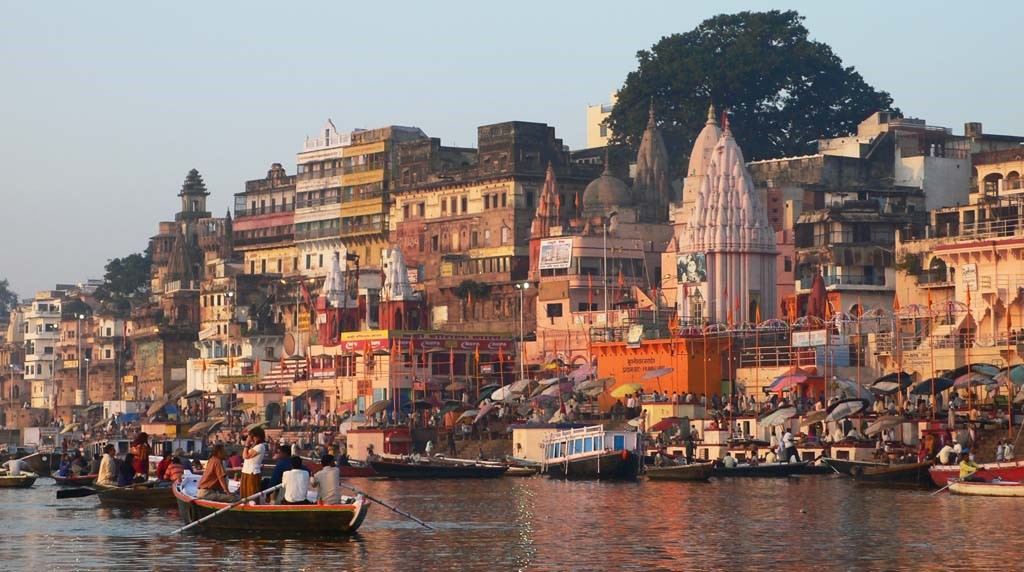
Early morning pick up for a very moving sunrise boat ride on the River Ganges to witness the religious ceremonies of Hindus. Afterwards a walking tour of temples and ghats.
Return to the hotel for breakfast and some time to rest from the early wake-up call, if you desire.
In the late morning (depart at approx 11 am), to visit Benaras Hindu University, regarded as the largest residential universities in Asia.
Bharat Kala Bhavan, located inside the BHU campus, is an art and architecture museum and houses a vast collection of paintings, Hindu and Buddhist sculptures and other materials of archeological importance. The Bharat Kala Bhavan was established in the year 1920 A.D. Bharat Kala Bhavan also has a great collection of miniature paintings from the courts of Mughals and other Kingdoms and principalities. Some of the important sections in the Bharat Kala Bhavan are Mahamana Malaviya gallery, Nicholas Roerich gallery, Chhavi (Painting Gallery), sculpture gallery, Nidhi (Treasures) gallery, sculpture gallery, archaeological gallery, decorative art gallery and Banaras through ages gallery.
Return to your hotel for lunch (Pay Direct) and refresh.
This afternoon, visit Sarnath where, in 500 BC, Lord Buddha preached his first sermon 'Maha- Dharma-Chakra Pravartan Sutta' (in Buddhist terminology, ‘turn the wheel of the law’) after his enlightenment. The very spot is marked by the Dhamekh Stupa, adorned with delicate floral carvings. You can walk the path, located in the midst of the archeological park, to see the ruins of the small brick monastery where Buddha lived during his visits. About 600 meters before the Archeological Museum, you will see the Chaukhandi Stupa. The excellent Archeological Museum contains an extremely rich collection of Buddhist sculptures of numerous Buddha and Bodhisatva images.
After visiting the museum, continue to Mahabodhi Society’s Mulgandha Kuti Vihar Temple. A major place of worship for the Buddhist community of the world, it was constructed by Bodhisatva Anagarika Dharmapala (1864-1933) from Sri Lanka at the very site where Shakyamuni Buddha preached his first sermon. The temple contains excellent frescoes painted by Japanese artist Kosetsu Notsu. He single handedly completed these paintings in a four year span (1932-36). It also houses a life size statue of Buddha in its sanctum and Gautam Buddha's holy relics are kept on display in the shrine. The monarchy of Japan has gifted a large bronze bell that dominates the entrance of the Vihar. The temple was opened to public on Nov. 11th, 1931 and the Mahabodhi Society of India oversees its affairs.
A Bodhi tree stands on the left (east) side of the temple that is believed to have grown out of a sapling of the one under which Buddha attained enlightenment at Bodhgaya. Under this tree statues of Buddha and his disciples have been displayed. The casket of the sacred relics is taken out in a great procession from Mulgandha Kuti Vihar and goes around this tiny city of Sarnath annually on the anniversary day of Mulgandha Kuti Vihar, which falls on Kartik Purnima (Full moon day) in the month of Nov.
At approx 6pm, local Buddhists chant the words to Buddha's first sermon.
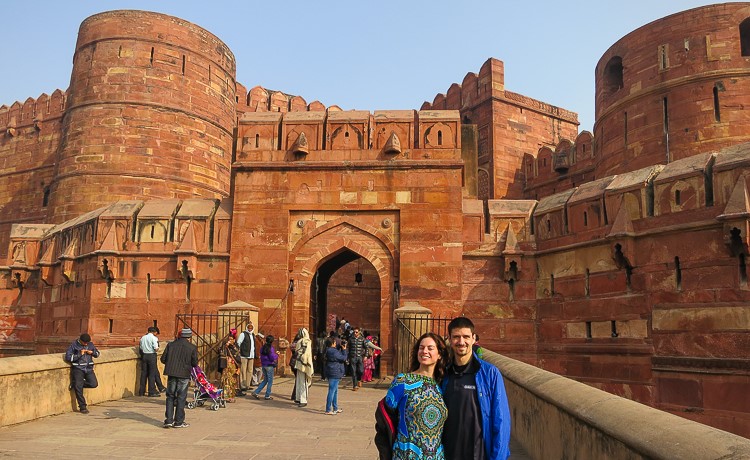
After breakfast, drive to DD Upadhyaya Junction to board HWH JU EXPRESS (12307) for Agra Fort. Upon arrival at Railway Station you will meet our company representative. Later you are transferred to your pre-booked hotel
Overnight stay at hotel.
Agra is one of the most popular tourist destinations in India, situated on the bank of Yamuna River. It is renowned for being home to one the Seven Wonders of the world, the Taj Mahal. It is as loved by Indians as it is by foreigners who throng here in large numbers to admire its beauty. Agra was the capital of Mughal Empire in the 16th & 17th centuries.
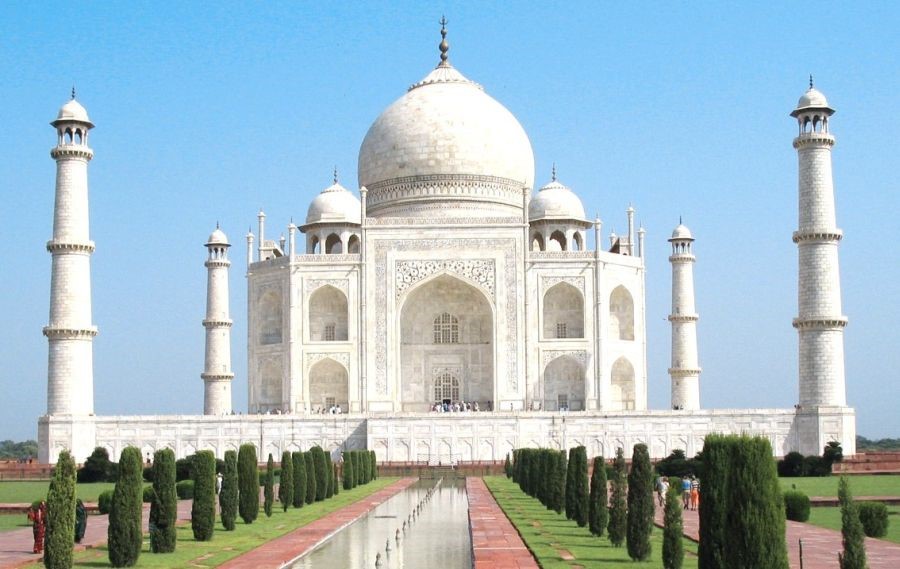
After early breakfast drive to Agra. Afternoon visit the incredible architectural excellence of Taj Mahal (Friday closed), built by Emperor Shah Jahan in memory of his beloved wife Mumtaz Mahal. Next we visit Agra Fort, built principally as a military establishment by Akbar in 1565. The red sandstone Agra Fort was partially converted into a palace during Shah Jahan's time. This massive Fort is 2.5 km long & is considered as predecessor of Delhi Red Fort. Later in the evening visit Itmad-ud-Daulah Tomb, built by Noor Jahan, wife of Mughal Emperor Jahangir, in memory of her father Mirza Ghiyas Beg. Before Taj Mahal was built, its rough design was already standing in the form of ItmadudDaulah's Tomb.
Agra Fort
Overnight stay at Hotel.
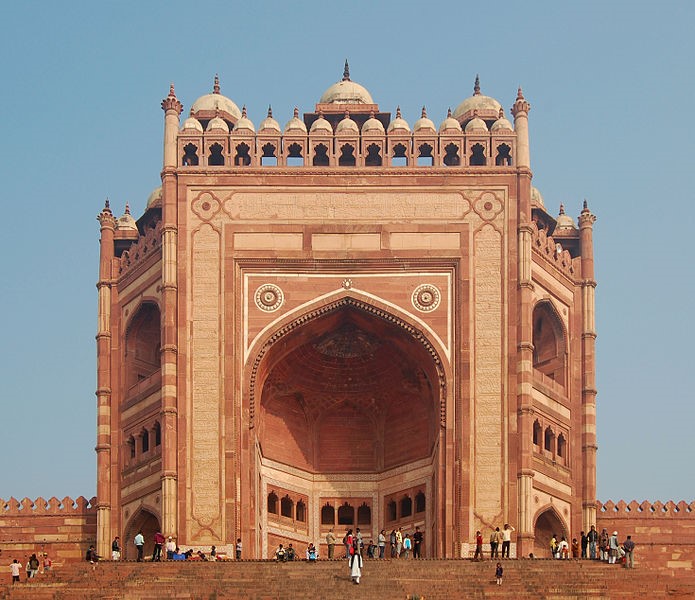
After breakfast drive to Jaipur enroute visit Fatephur Sikri, built in 1571, one of the world's most perfect ghost cities and a marvel of design and construction. It is a synthesis of the flourishing styles of the Persian courts and the prevailing Hindu-Islamic trends. Fatehpur (town of victory) Sikri was built by Akbar, the third and greatest of the Great Moguls. It is over 400 years old and today its pristine red sandstone buildings are as perfect as when they were first chiseled.
Fatehpur Sikri
The town was erected after a holy man, Sheikh Salim Chisti, decreed the births of three sons to Akbar after all his children had died in infancy. There are three sections to the City: The Royal Palace (notable for the Emperor's throne), the outside of the Royal Palace and the Jami Masjid (the location of the Tomb of Sheikh Salim Chishti, a masterpiece in brilliant white marble). The centerpiece of this remarkable monument is the Jewel House of the Diwan I Khas. Architecturally extraordinary, the four doorways lead into a single-story room where a huge central pillar supports a seat reached by mid-air walkways.
Upon arrival at Jaipur you are check In to your pre-booked hotel.
Evening you can walk around the Local Bazaars. Overnight stay at Hotel.
Jaipur, It is the capital of Rajasthan, and is known as the “Pink City” because of the pink tinted constructions in the old city. It is situated on a dry lake bed, bordered by barren Aravali hills vanquished by forts and broken walls. The city was found in 1727 by Maharaja Jai Singh II,. It is a great city for shopping.
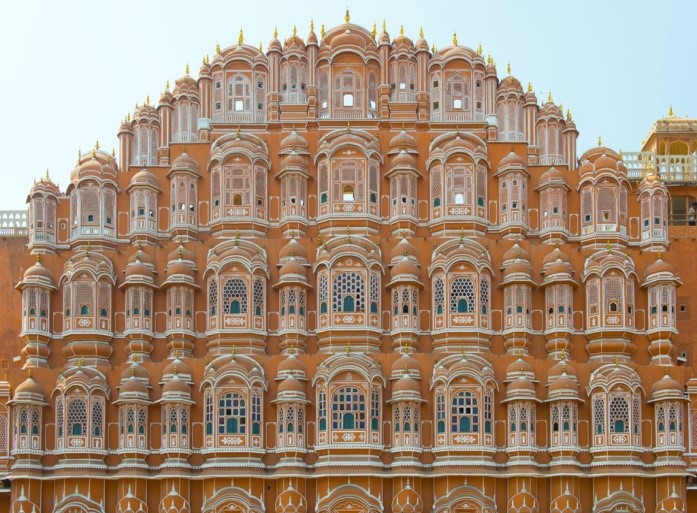
Jaipur, It is the capital of Rajasthan, and is known as the “Pink City” because of the pink tinted constructions in the old city. It is situated on a dry lake bed, bordered by barren Aravali hills vanquished by forts and broken walls. The city was found in 1727 by Maharaja Jai Singh II,. It is a great city for shopping.
Morning drive to Amber, the name of the ancient kingdom of Jaipur and also the name of its ancient capital, situated 7 miles away. Its history can be traced backed to the 12th century. Amber Fort is superbly located, protected by the wild Arrival Hills on all sides. Originally built in the 11th century, it was expanded by Raja Man Singh in the late 16th century. The ascent to the Fort will be on elephant backs.
Amber Fort
Afternoon: city tour including the City Palace, Hawa Mahal (Palace of Winds), Jantar Mantar Observatory, bazaars.
Palace of Winds
Known as the “Pink City,” Jaipur was founded by Sawai Jai Singh II (1700-1743). It has 7 gates into the city--one for each of the 7 planets (which was the number of planets known at the time of the city’s founding). At the heart of Jaipur is its City Palace which houses an extensive collection of rare manuscripts, Mughal and Rajasthani miniatures, Mughal carpets, costumes and textiles, arms and weapons, royal buggies, chariots and palanquins and a remarkable carriage -the indiraviman - that was drawn by four elephants.
At the center is Chandra Mahal, the seven-tiered moon palace where the present Maharaja still resides. The City Palace complex also contains the Govind Devji Temple, dedicated to Lord Krishna. Just outside the gateway of the City Palace is Jantar Mantar, the Yantralaya of Sawai Jai Singh II, the last great classical astronomer in India. The modernistic structures known as Yantras are the unique creations of this astronomer-king, designed by him and built by experts to observe the movements of the sun, moon, planets and stars. This is the largest of five observatories founded by the astronomer-king in various parts of the country. Hawa Mahal (Palace of Winds) is Jaipur's most-photographed building, a honeycomb palace with 953 latticed windows overlooking the bazaar and busy streets of Jaipur. Built in 1799 by the poet-king Pratap Singh, this extraordinary building was used by purdah-bound women to watch the grand processions that were a regular feature of the city.
Dinner at Surabhi Restaurant & Turban Museum
Overnight stay at hotel
After relaxed breakfast, late morning we drive towards Delhi, drop at IGI New Delhi Airport for your onward journey.
Tour Ends….
Travis Tan
Cu nisl putent omittantur usu